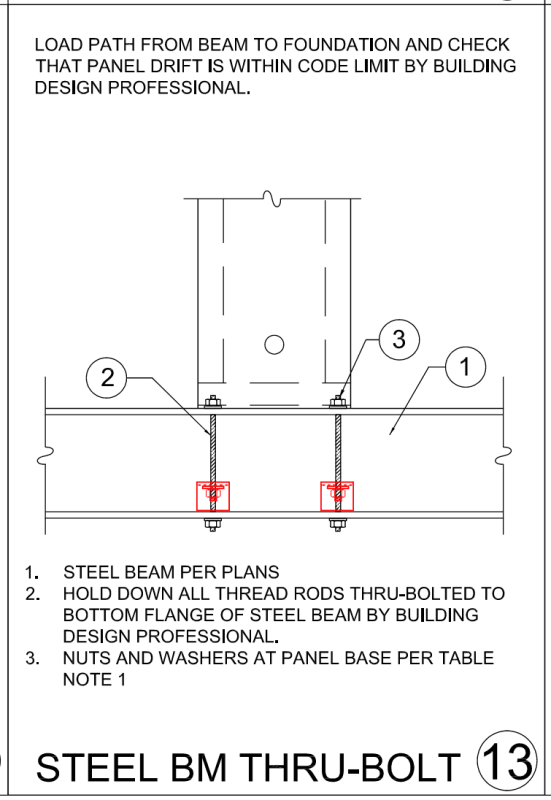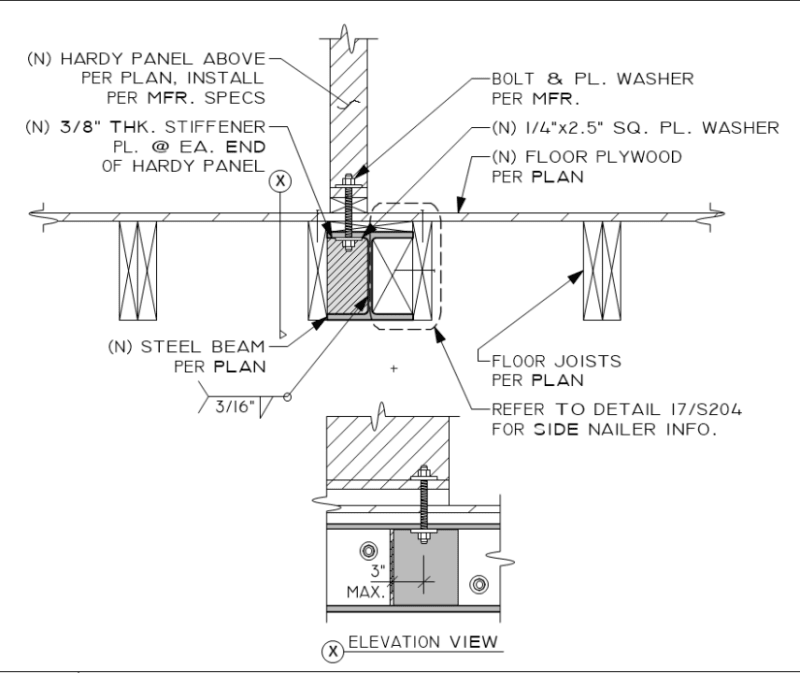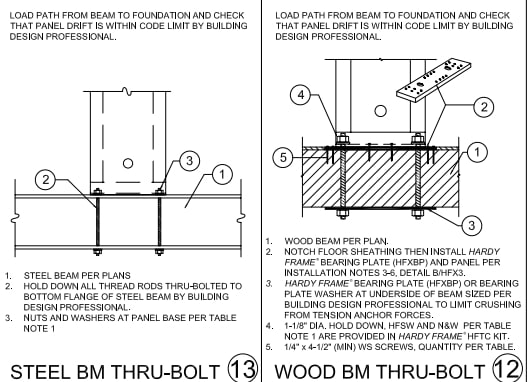Hi All,
I have often come to this forum to search for info re: relevant questions and have finally joined. Here is my current situation:
I have two Hardy Frame Panels to be installed on a steel beam in the upper floor of a 2-story residence. My question is regarding the attachment of the Hardy anchors to the steel beam. Mitek wants you to drill thru both the top and bottom flange. They specify the nut and washer above the top flange, and require the design professional to specify the nut & washer below the bottom flange. My problem is the bottom nut & washer would protrude below the bottom of floor framing and may be difficult to conceal within the 5/8" drywall.
Has anyone ever welded to the top face of the bottom flange? And perhaps add a secondary nut & plate washer on the bottom face of the top flange? Any other ideas welcome! I am happy to share loads, sizes, detail, etc as needed.
Thanks!
I have often come to this forum to search for info re: relevant questions and have finally joined. Here is my current situation:
I have two Hardy Frame Panels to be installed on a steel beam in the upper floor of a 2-story residence. My question is regarding the attachment of the Hardy anchors to the steel beam. Mitek wants you to drill thru both the top and bottom flange. They specify the nut and washer above the top flange, and require the design professional to specify the nut & washer below the bottom flange. My problem is the bottom nut & washer would protrude below the bottom of floor framing and may be difficult to conceal within the 5/8" drywall.
Has anyone ever welded to the top face of the bottom flange? And perhaps add a secondary nut & plate washer on the bottom face of the top flange? Any other ideas welcome! I am happy to share loads, sizes, detail, etc as needed.
Thanks!




